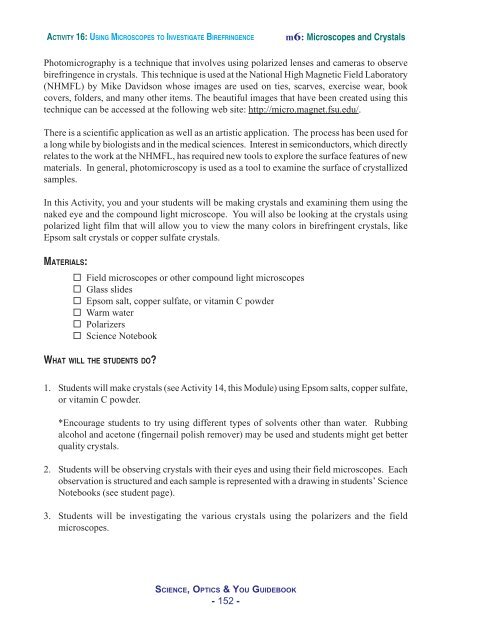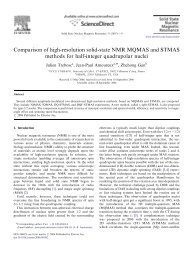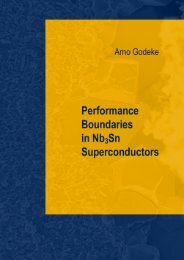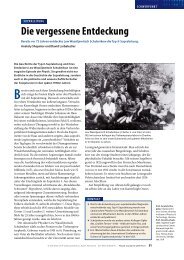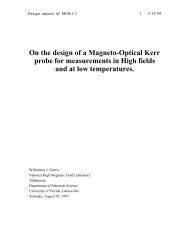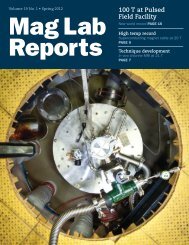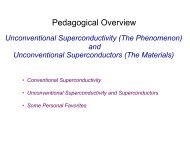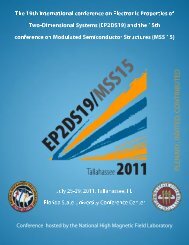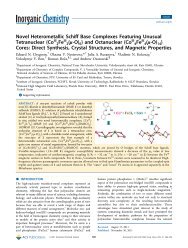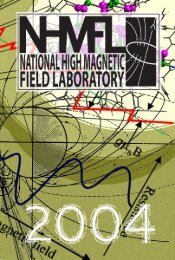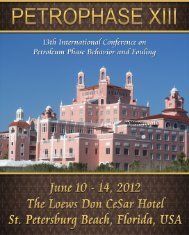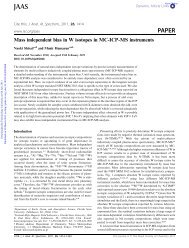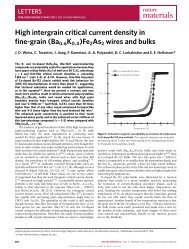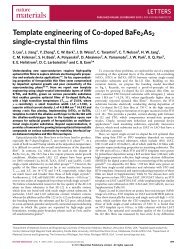Microscopes and Crystals - National High Magnetic Field Laboratory
Microscopes and Crystals - National High Magnetic Field Laboratory
Microscopes and Crystals - National High Magnetic Field Laboratory
Create successful ePaper yourself
Turn your PDF publications into a flip-book with our unique Google optimized e-Paper software.
ACTIVITY 16: USING MICROSCOPES TO INVESTIGATE BIREFRINGENCE<br />
m6: <strong>Microscopes</strong> <strong>and</strong> <strong>Crystals</strong><br />
Photomicrography is a technique that involves using polarized lenses <strong>and</strong> cameras to observe<br />
birefringence in crystals. This technique is used at the <strong>National</strong> <strong>High</strong> <strong>Magnetic</strong> <strong>Field</strong> <strong>Laboratory</strong><br />
(NHMFL) by Mike Davidson whose images are used on ties, scarves, exercise wear, book<br />
covers, folders, <strong>and</strong> many other items. The beautiful images that have been created using this<br />
technique can be accessed at the following web site: http://micro.magnet.fsu.edu/.<br />
There is a scientific application as well as an artistic application. The process has been used for<br />
a long while by biologists <strong>and</strong> in the medical sciences. Interest in semiconductors, which directly<br />
relates to the work at the NHMFL, has required new tools to explore the surface features of new<br />
materials. In general, photomicroscopy is used as a tool to examine the surface of crystallized<br />
samples.<br />
In this Activity, you <strong>and</strong> your students will be making crystals <strong>and</strong> examining them using the<br />
naked eye <strong>and</strong> the compound light microscope. You will also be looking at the crystals using<br />
polarized light film that will allow you to view the many colors in birefringent crystals, like<br />
Epsom salt crystals or copper sulfate crystals.<br />
MATERIALS:<br />
$ <strong>Field</strong> microscopes or other compound light microscopes<br />
$ Glass slides<br />
$ Epsom salt, copper sulfate, or vitamin C powder<br />
$ Warm water<br />
$ Polarizers<br />
$ Science Notebook<br />
WHAT WILL THE STUDENTS DO?<br />
1. Students will make crystals (see Activity 14, this Module) using Epsom salts, copper sulfate,<br />
or vitamin C powder.<br />
*Encourage students to try using different types of solvents other than water. Rubbing<br />
alcohol <strong>and</strong> acetone (fingernail polish remover) may be used <strong>and</strong> students might get better<br />
quality crystals.<br />
2. Students will be observing crystals with their eyes <strong>and</strong> using their field microscopes. Each<br />
observation is structured <strong>and</strong> each sample is represented with a drawing in students’ Science<br />
Notebooks (see student page).<br />
3. Students will be investigating the various crystals using the polarizers <strong>and</strong> the field<br />
microscopes.<br />
SCIENCE, OPTICS & YOU GUIDEBOOK<br />
- 152 -


